Sarnath, Varanasi, Uttar Pradesh : Most Significant Buddhist Pilgrimage Sites with Dhamek Stupa and Chaukhandi Stupa in India – Where Lord Buddha Delivered His First Sermon, Sanctified as Maha Dharm Chakra Parivartan : Visit, Timings, History, Light & Sound Show, Contact Information, Travel Guide (Update)
– excavated archaeological site of sarnath
Sarnath, situated approximately 10 km from Varanasi in Uttar Pradesh, stands as one of the four revered sites deeply intertwined with the life of Lord Buddha. It exudes a profound influence of Buddhism, being the sacred ground where Buddha, having attained enlightenment at Bodhgaya, imparted his inaugural sermon to his five devoted companions. This pivotal moment in Buddhist lore is hailed as the Dharma-Chakra-Pravartana, signifying the Turning of the Wheel of Law. Presently, the Archaeological Survey of India (ASI) meticulously oversees the preservation of this revered site.
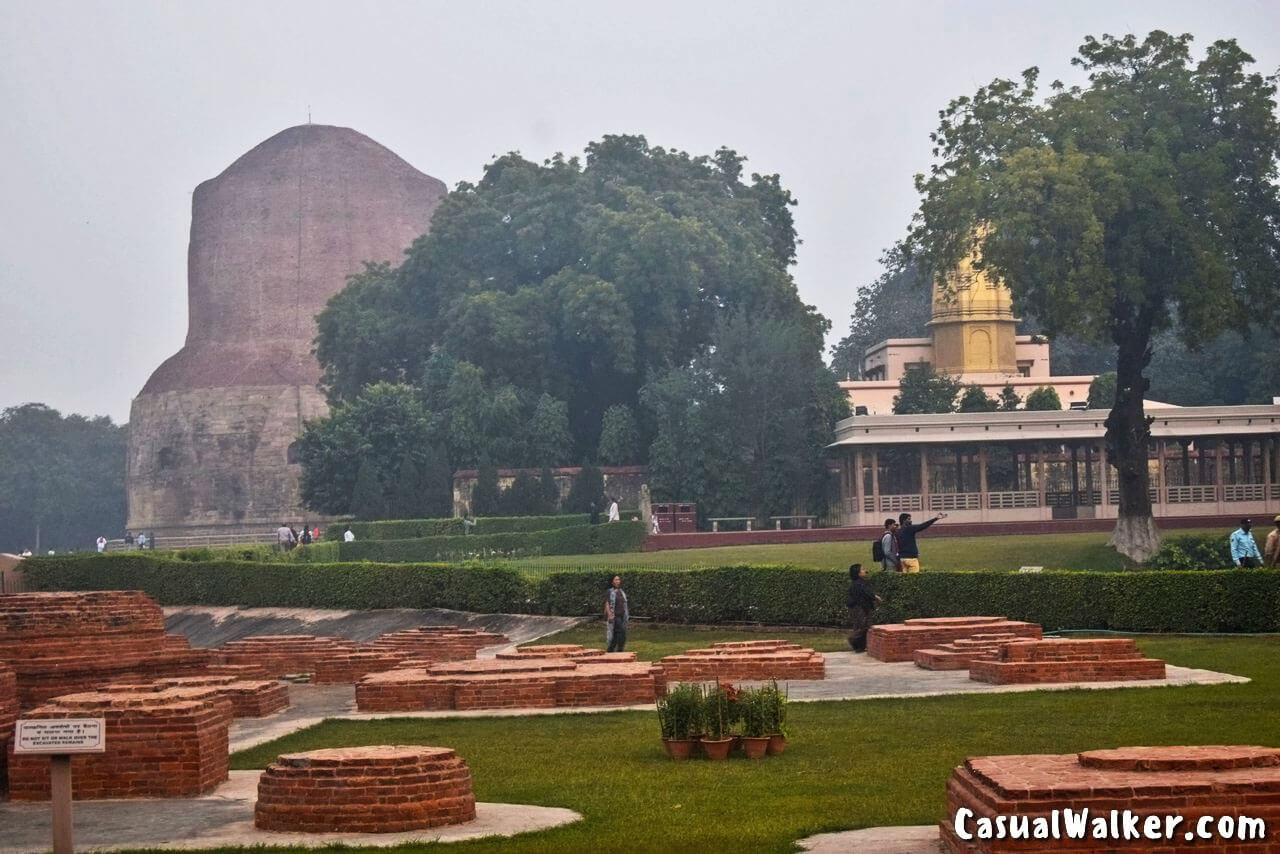
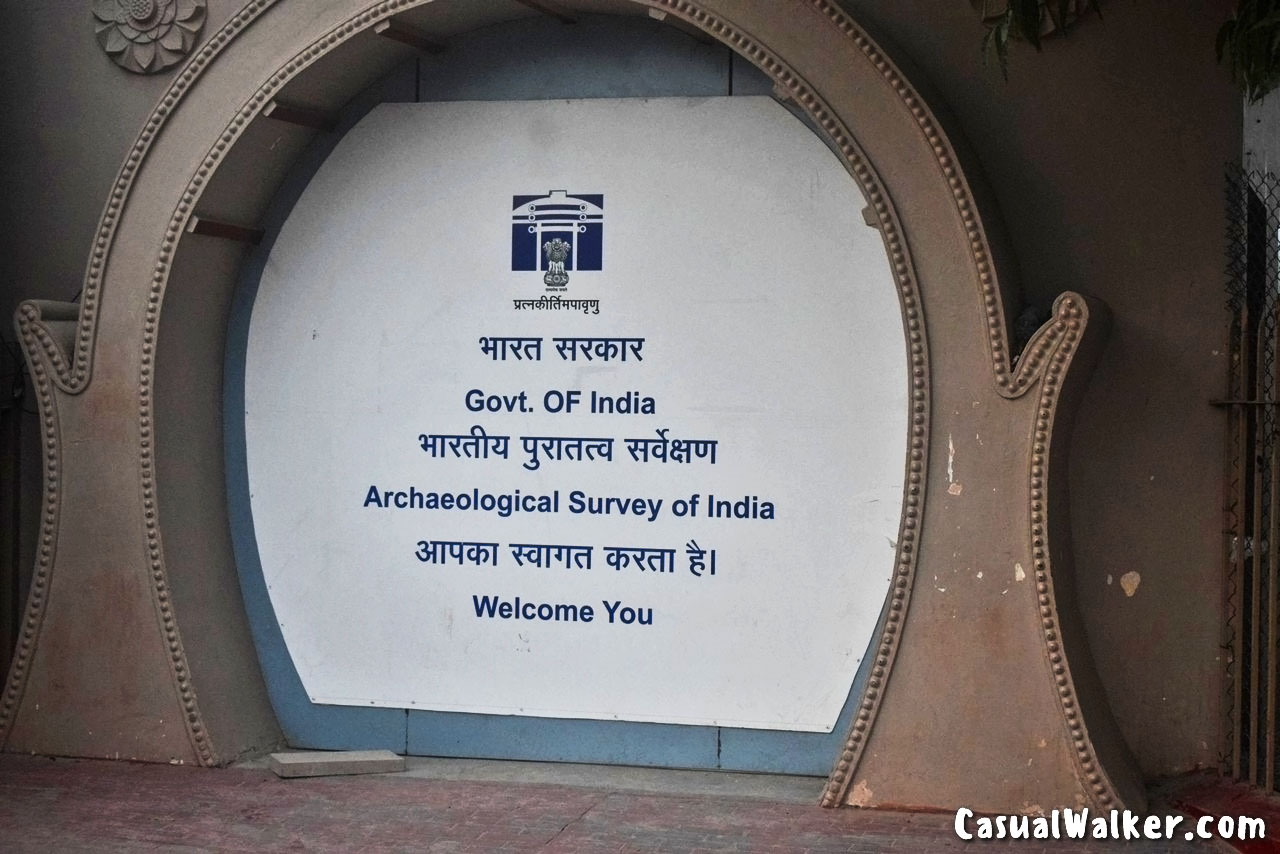
It was here, amidst the tranquil environs of Sarnath, that Lord Buddha inaugurated the very first Buddhist Sangha. Revered in ancient Buddhist scriptures as Rishipatan or Issipatana, and Mrigadava or Mrigaday, Sarnath carries echoes of its past. Its contemporary moniker, a derivative of Saranganath – the Lord of Deer, continues to pay homage to the revered deity enshrined in a nearby temple.
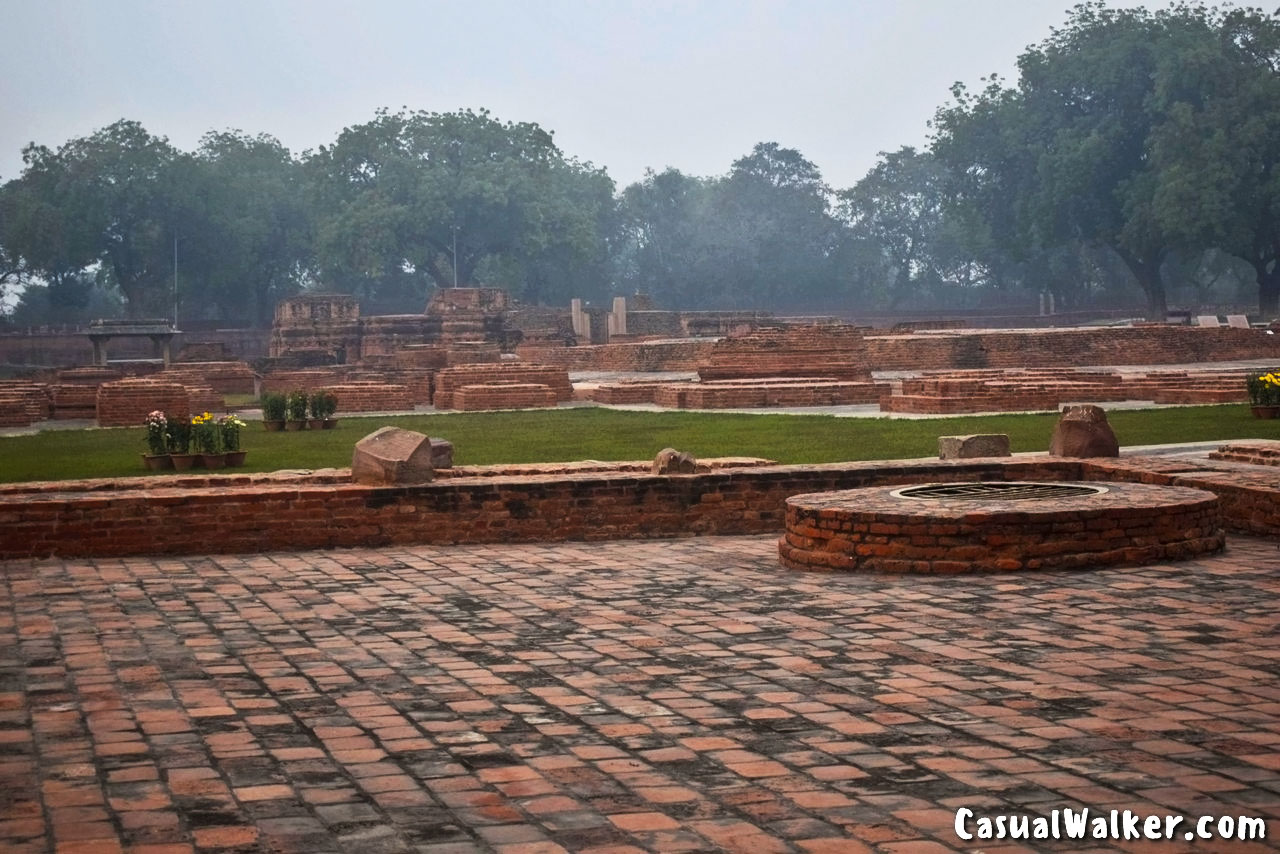
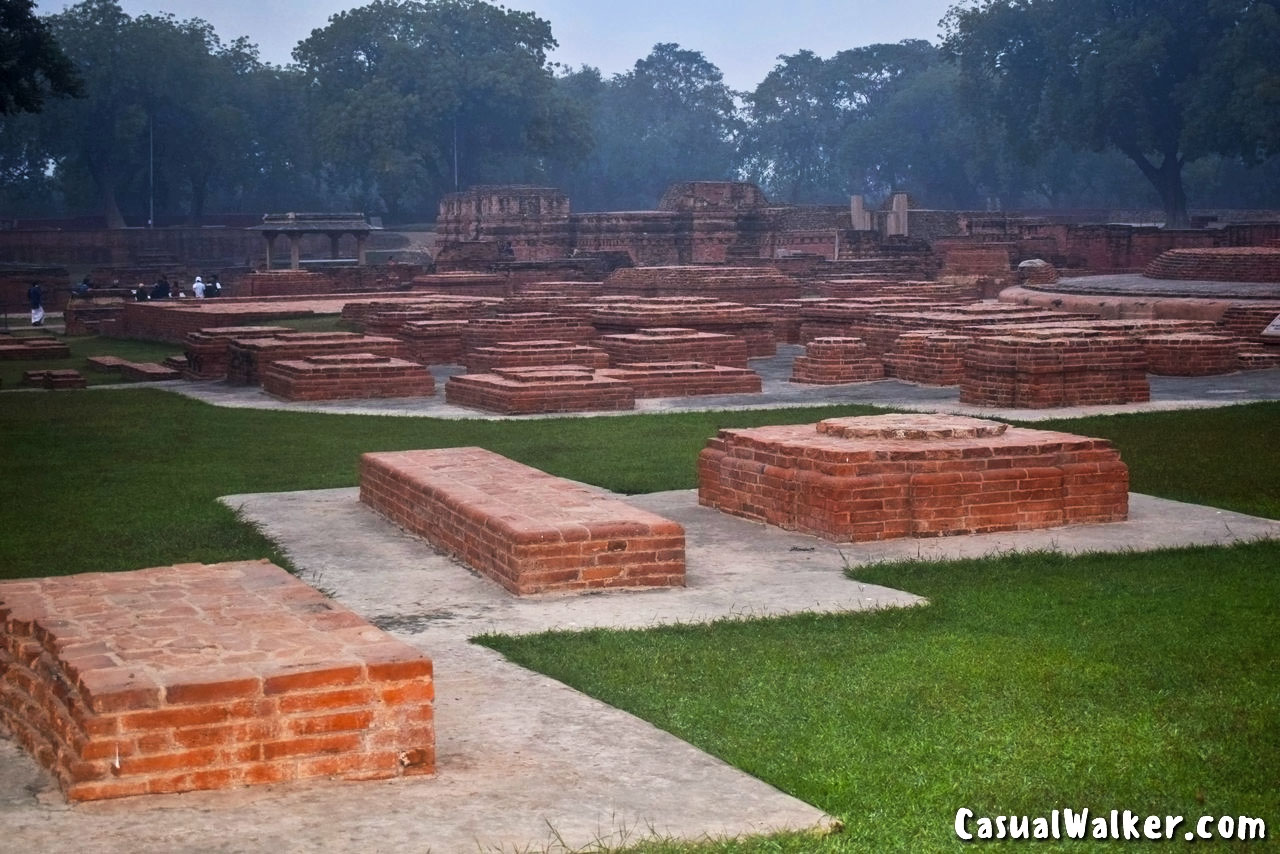
At Sarnath, the profound teachings of Lord Buddha found expression in the elucidation of the Four Noble Truths, which form the bedrock of Buddhist philosophy. This pivotal moment heralded Sarnath as the nucleus of Buddhism, where Lord Buddha and his esteemed disciples established the inaugural Buddhist Sangha. In subsequent strides, he dispatched these devoted adherents to disseminate the tenets of Buddhism far and wide.
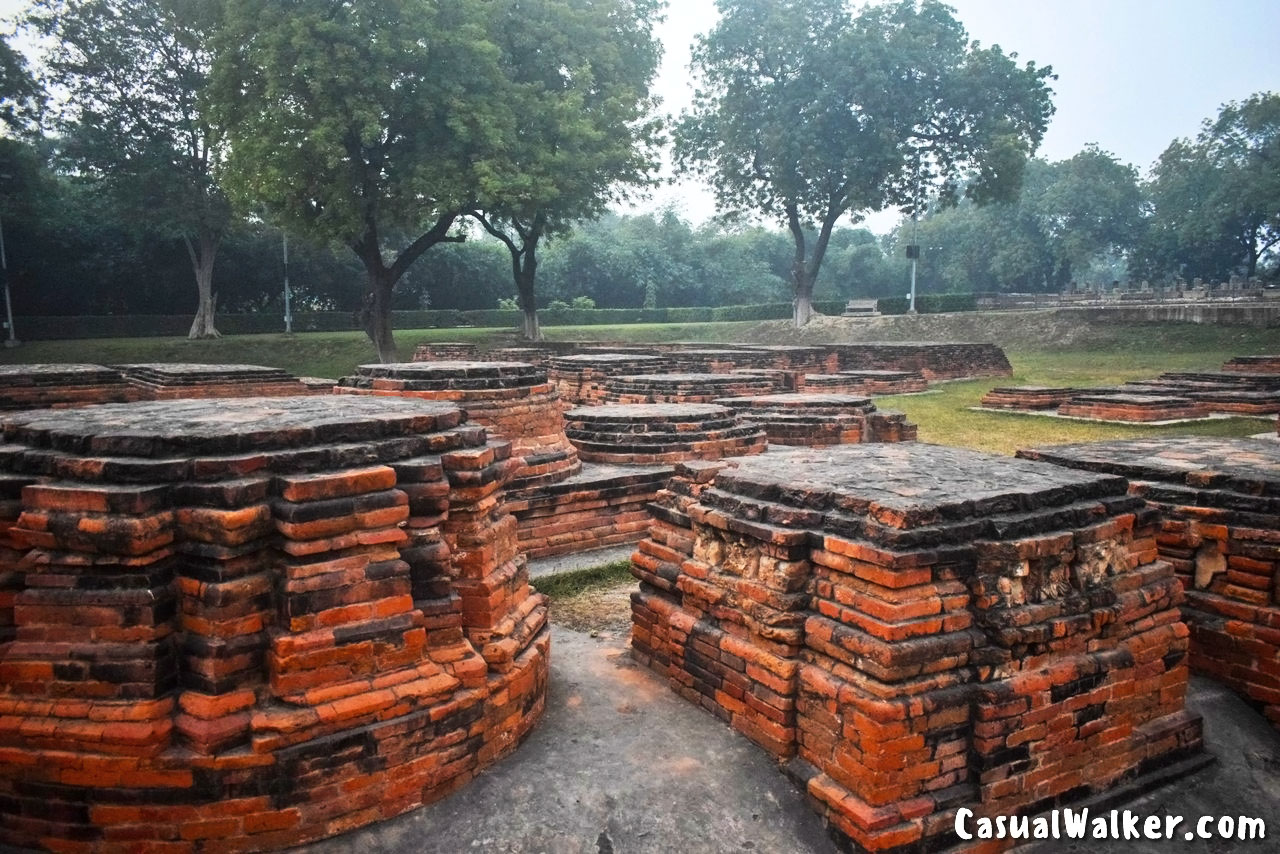
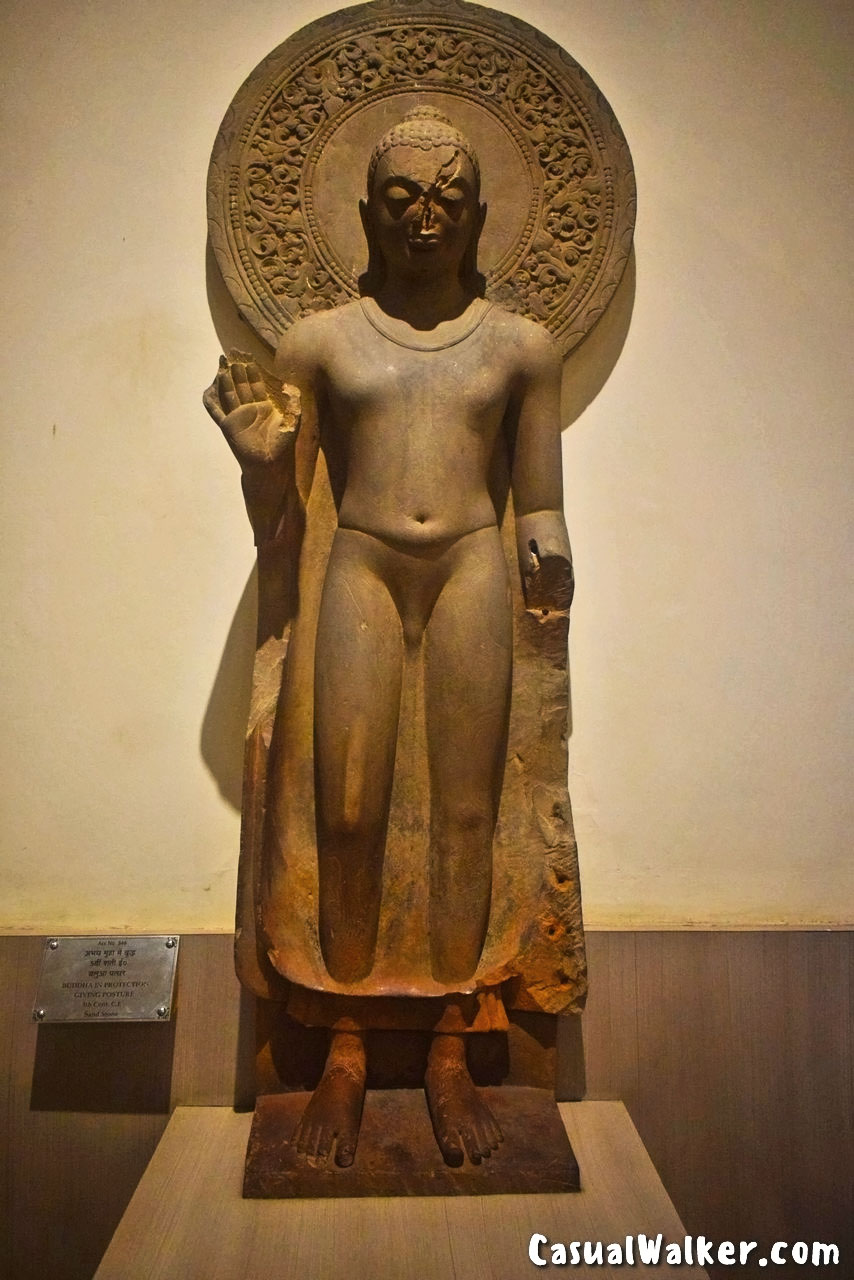
History of Sarnath, Varanasi
Nearly two centuries following the Mahaparinirvana of Lord Buddha, King Ashoka (273-32 B.C.), the illustrious Mauryan emperor, embarked on a monumental endeavor to proliferate the profound message of dharma at Sarnath. He erected numerous stupas and monasteries, with the iconic Dhamek Stupa believed to have been constructed circa 500 CE under his auspices. This architectural marvel stands as a testament to Emperor Ashoka’s enduring legacy, having ordered its construction in the 3rd century BC. It was here, amidst the grandeur of Dhamek Stupa, that Buddha expounded the transformative eightfold path leading to nirvana and enlightenment.
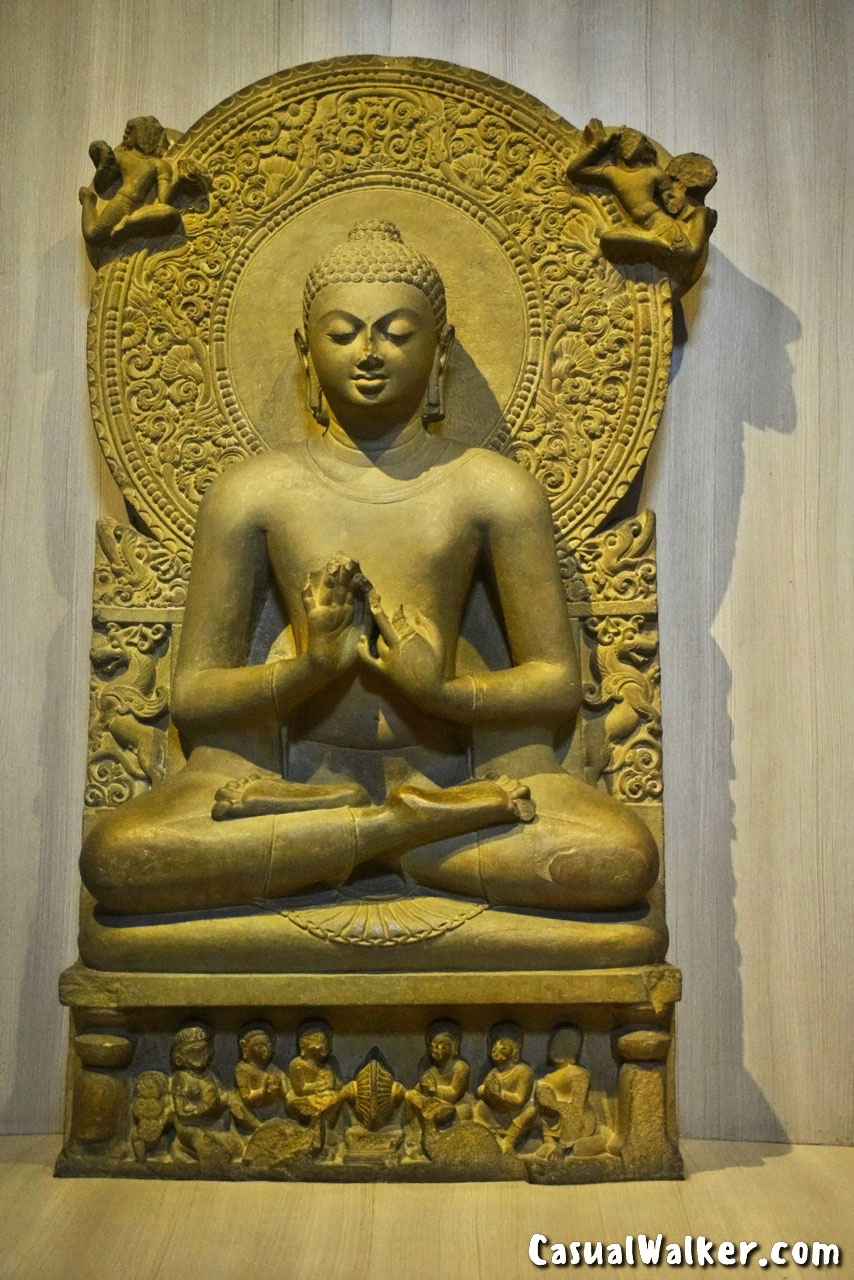
Emblematic Ashoka Pillar in Sarnath, Varanasi
Among the enduring monuments erected by King Ashoka, the towering stone pillar erected around 250 BC holds particular significance. Adorned with sculpted lions atop its pinnacle and the revered Dharma Chakra adorning its base, this imposing structure encapsulates the essence of Buddha’s teachings. The pillar, adorned with four lions symbolizing power, valor, pride, and faith, serves as a profound symbol of King Ashoka’s unwavering devotion to Buddhist ideals. Currently, this historic artifact finds its home within the precincts of the Sarnath Museum.
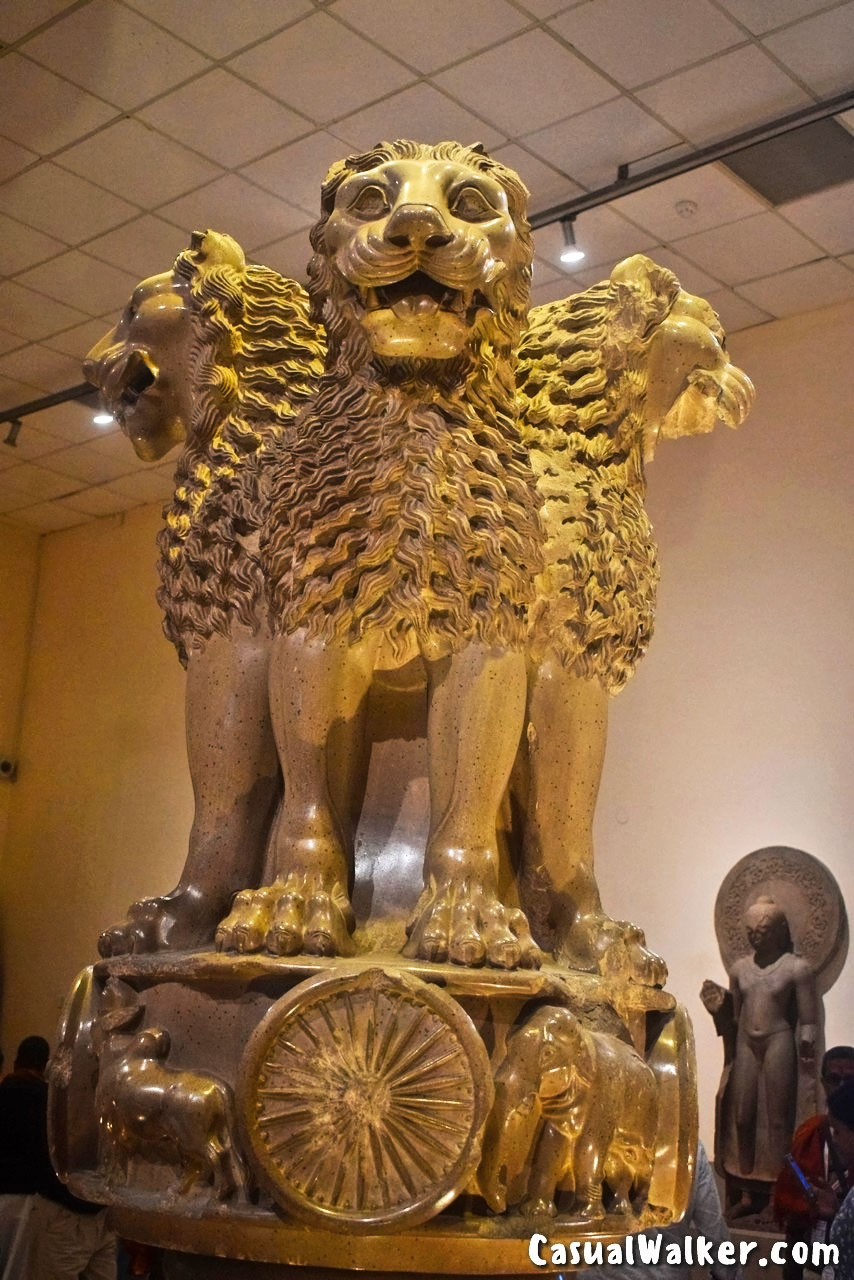
Ashoka Pillar – The Symbol of National Identity
The Ashoka Pillar, adorned with inscriptions dating back to ancient times, serves as a poignant reminder of India’s rich heritage. Its Brahmi script inscription, an Ashokan edict, underscores the King’s fervent commitment to preserving the unity of the Sangha. Additionally, inscriptions from the Kushan and Gupta periods offer further insights into the historical significance of this revered site.
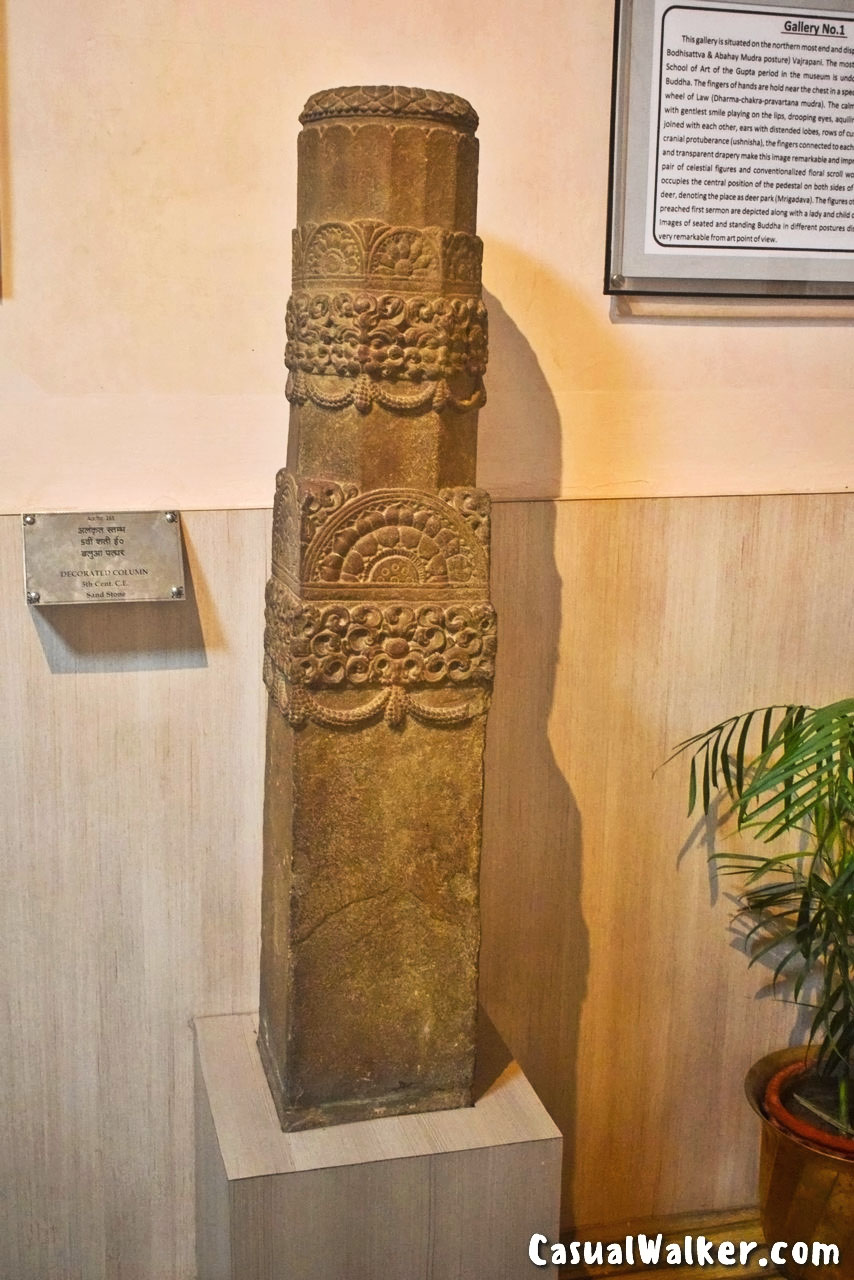
Today, the iconic Sarnath lion-faced pillar stands as the national emblem of India, with the revered “Ashoka Chakra” adorning its base finding representation on the Indian national flag.
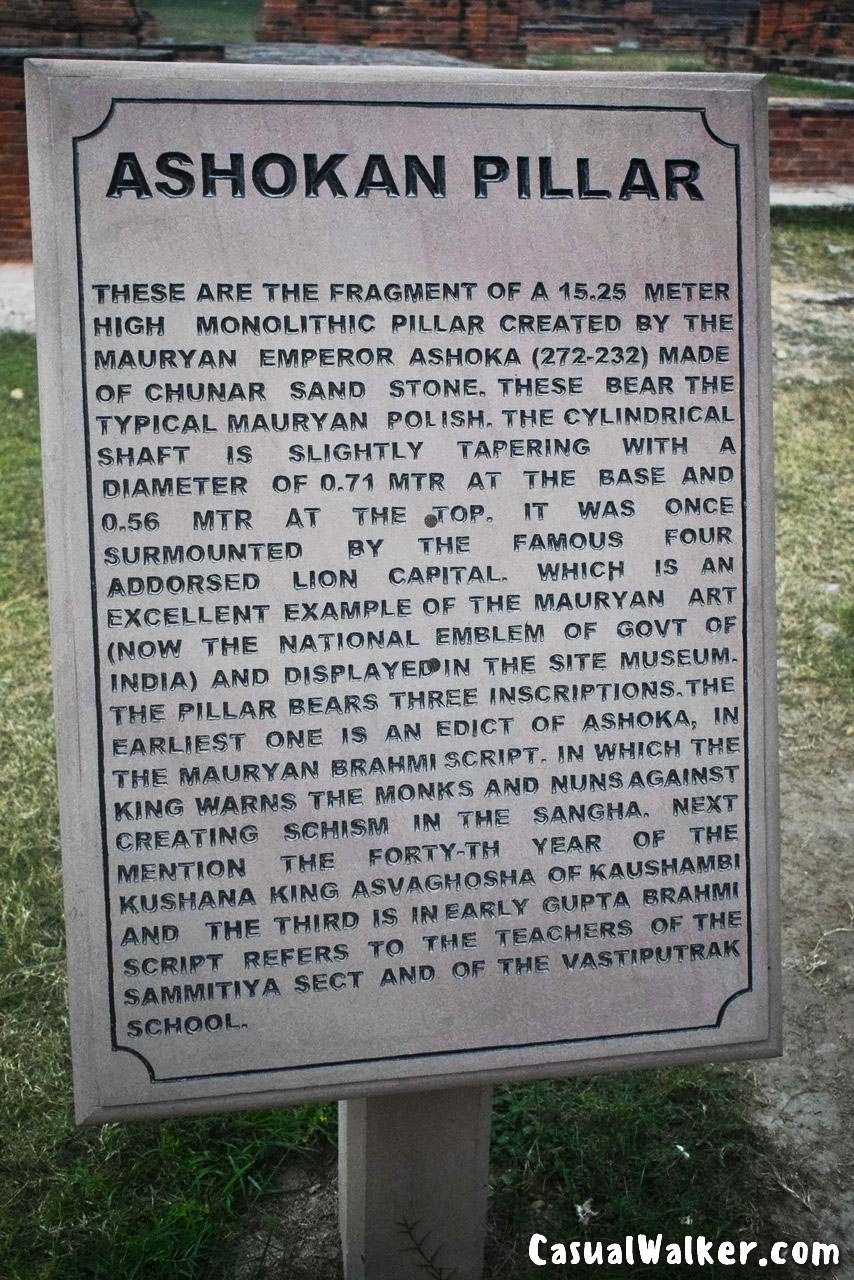
Excavated Archaeological site of Sarnath
Despite its illustrious past, Sarnath faced the ravages of time, with outside invaders pillaging its treasures, causing the once-flourishing city to fade into obscurity. It wasn’t until the discovery of the lost city by British archaeologists that Sarnath’s archaeological significance was unearthed. Since then, a series of excavations led by pioneering archaeologists have revealed a treasure trove of ancient relics dating back from the 3rd century B.C. to the 12th century A.D. The archaeological significance of Sarnath was first recognized in 1798 A.D. by Mr. Duncan and Col. E Mackenzie, followed by a series of excavations by Alexander Cunningham (1835-36), Major Kittoe (1851-52), Mr. F. O. Oertel (1904-05), Sir John Marshall (1907), M.H. Hargreaves (1914-15), and finally, Dayaram Sahani.
Preserving Buddhist Legacy
According to the Mahaparinibbana Sutta, Lord Buddha himself imparted instructions for his disciples to journey to four sacred locations: Lumbini, Bodh Gaya, Sarnath, and Kusinagara. These sites, marking pivotal moments in Buddha’s life from birth to nirvana, hold profound significance for Buddhists worldwide.
Inscriptions discovered from the early medieval period refer to Sarnath as Dharmacharkra – the Convent of the Turning of the Wheel of the Law. These inscriptions offer invaluable insights into Sarnath’s role as a beacon of Buddhist teachings throughout the ages.
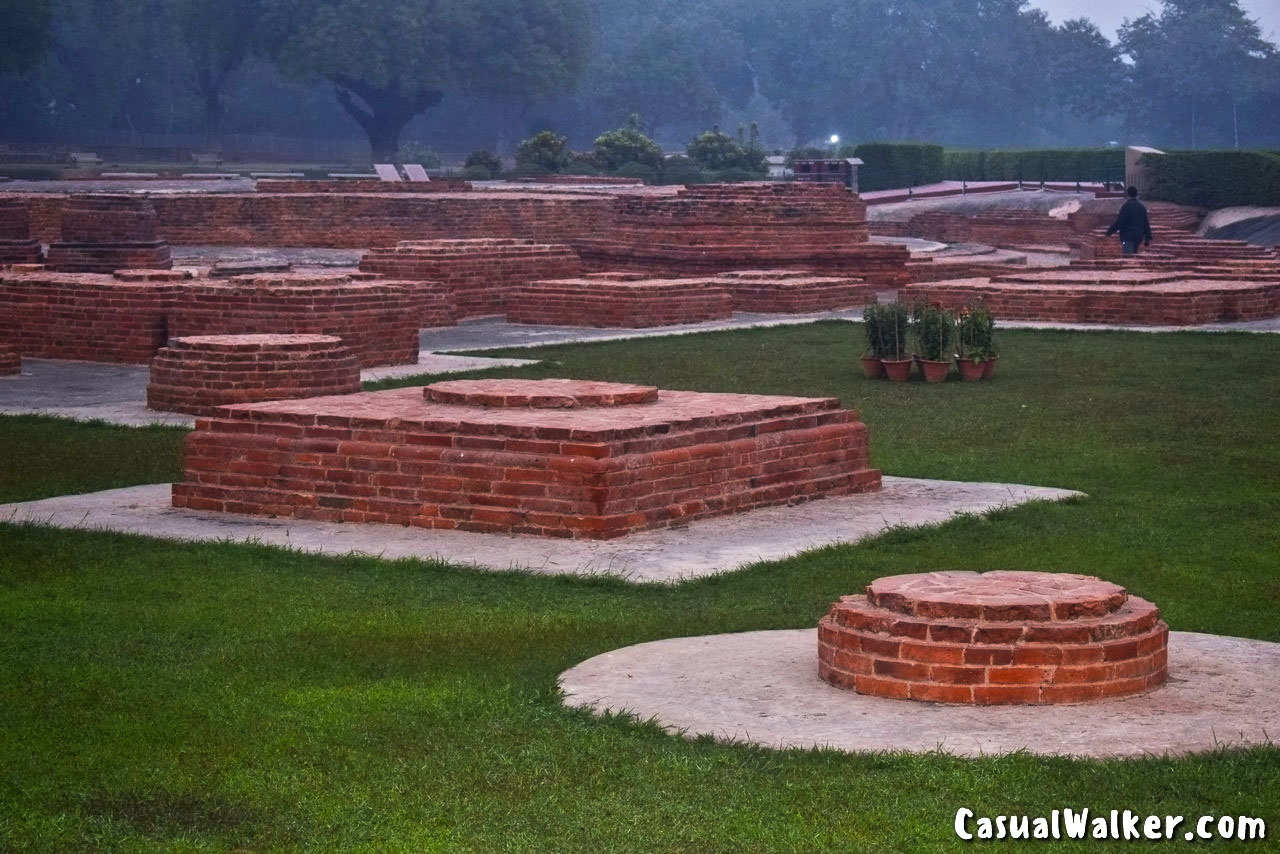
Explore the timeless allure of Sarnath, where history and spirituality intertwine to offer a glimpse into the profound legacy of Lord Buddha. During the illustrious reign of Kanishka, a plethora of Bodhisattva statues adorned the sacred grounds of Sarnath. However, it was during the Gupta era that these sculptures reached the zenith of their artistic splendor, showcasing unparalleled craftsmanship and finesse.
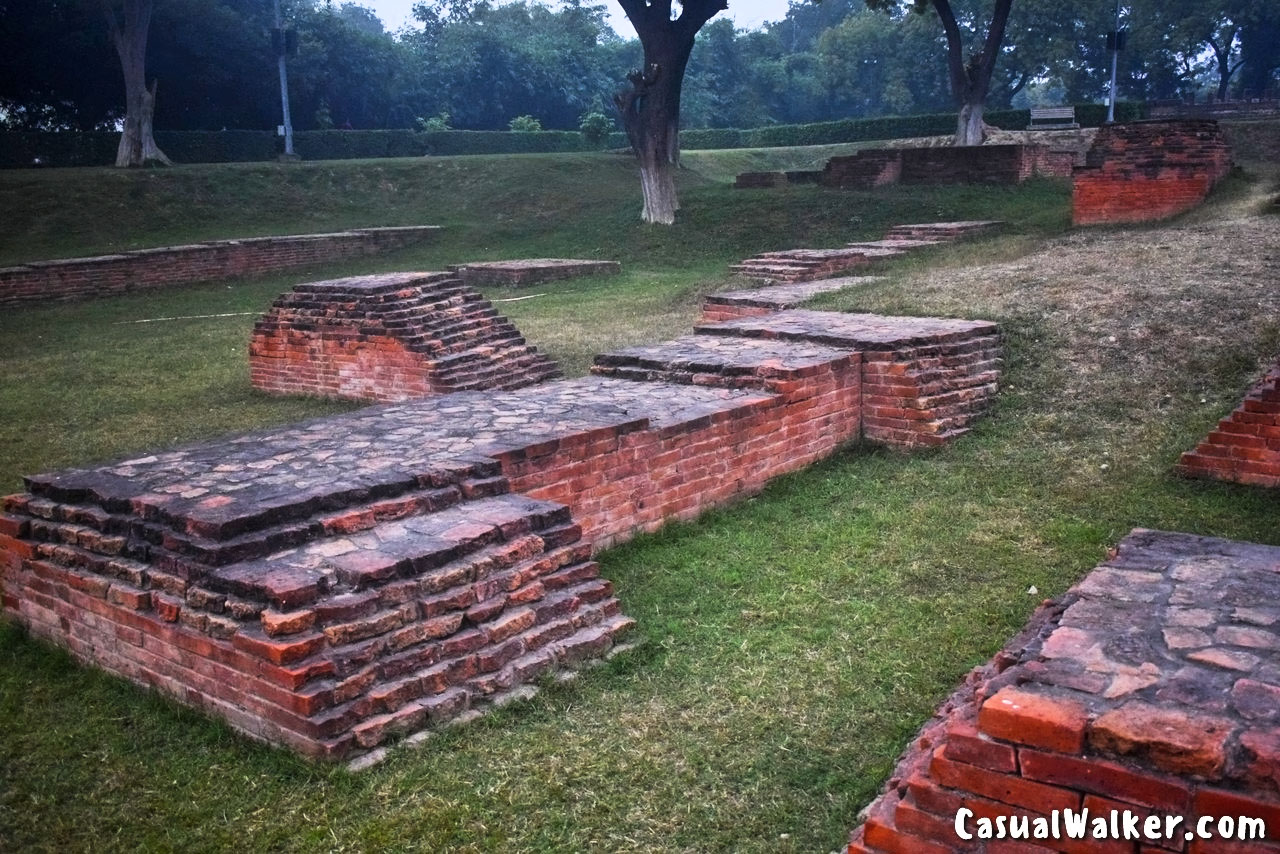
Jain Spiritual Significance
Sarnath, steeped in history and spirituality, holds significance not only for Buddhists but also for the Jain community. Revered as the final resting place of Sreyansantha, the 12th Tirthankara of Jainism, this hallowed ground is a testament to the enduring legacy of faith.
Magnificence of Sarnath’s Buddhist Complex
Discovering the Dhamek Stupa in Sarnath, Varanasi
At the heart of Sarnath’s archaeological marvels lies the Buddhist Complex, with the grand Dhamek Stupa reigning supreme. Crafted from red bricks and stone, this imposing cylindrical structure stands tall at 43.6 meters, with a diameter spanning 28 meters. It’s believed that atop the platform of this stupa, Buddha delivered his inaugural sermon after attaining enlightenment. Visitors can bask in the serene ambiance while seated on the benches thoughtfully placed around the stupa.
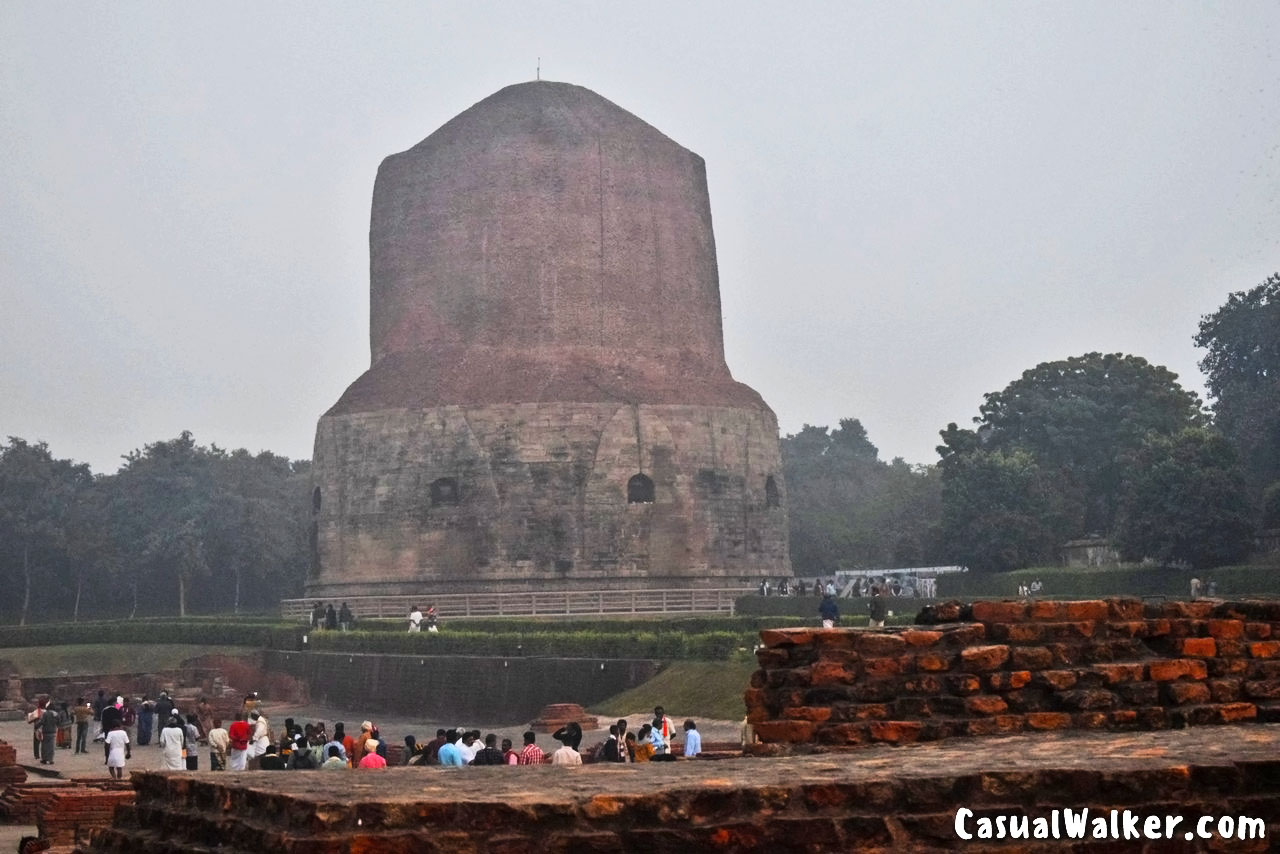
Tracing the Stupa’s History
Originally commissioned during the reign of the Mauryan emperor Ashoka, the Dhamek Stupa has evolved, bearing witness to numerous additions and modifications. These stupas served as sanctuaries for Buddhist monks and venues for religious rites. The name “Dhamek” is believed to have originated from the term “Dharma Chakra.”
The Dhamek Stupa stands as a symbol of Buddhist heritage and spiritual reverence, drawing pilgrims from far and wide. It commemorates the founding of the first Buddhist Sangha and serves as a sacred site for devotees to offer prayers and seek solace in the teachings of Lord Buddha. Witnessing pilgrims draped in robes of the same hue, engaged in peaceful prayer, adds to the tranquil ambiance of this sacred space.
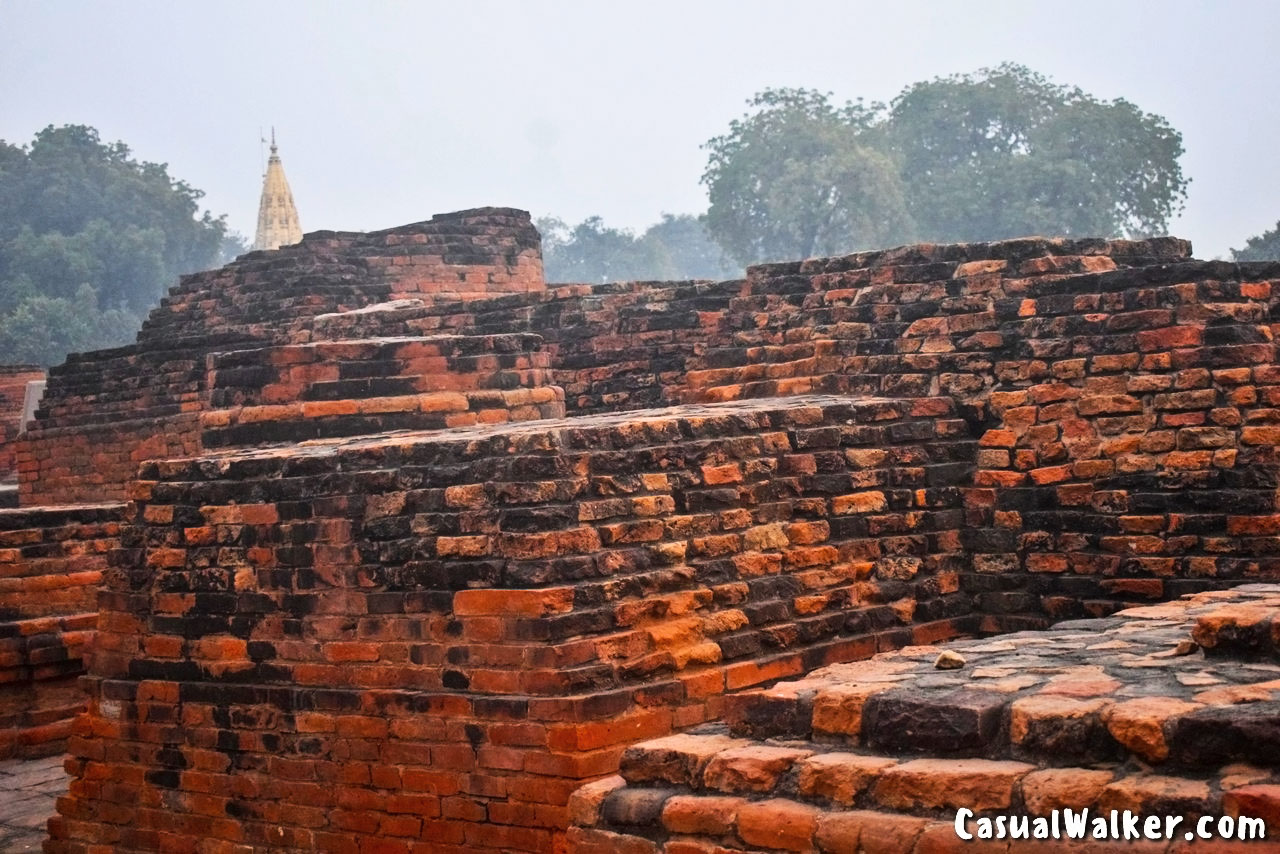
Venture further into the complex to discover the Dharmarajika Stupa, believed to be the creation of King Ashoka in the 3rd century BC. Though largely dismantled in 1794 to procure bricks for a market in Benaras, remnants of its splendor still linger. The nearby Mulagandha Kuti, once a towering temple marking Buddha’s meditation site, now lies in ruin, yet retains traces of its former grandeur. Despite the passage of time, the allure of these ancient relics continues to captivate visitors, offering glimpses into Sarnath’s illustrious past.
Rectangular Courtyard
Nestled between the main shrine and the illustrious Dhamek Stupa lies a rectangular courtyard adorned with smaller shrines and votive stupas. This tranquil space invites contemplation amidst the ancient echoes of devotion.
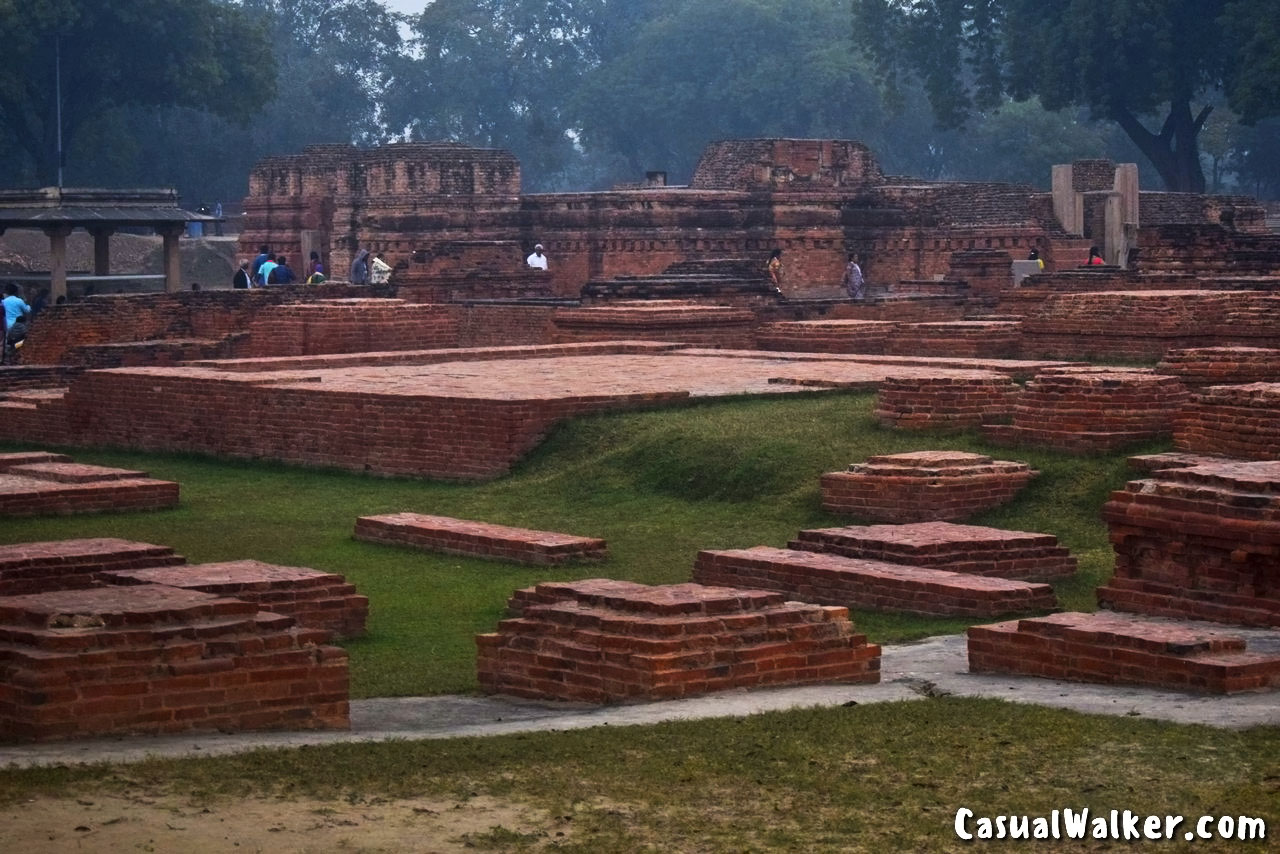
Journey to the Panchayatana Shrine
Just south of the courtyard stands the Panchayatana Shrine, reminiscent of a Hindu temple, dating back to the Gupta era. This architectural gem offers a glimpse into the interplay of diverse cultural influences in Sarnath’s rich tapestry of history.
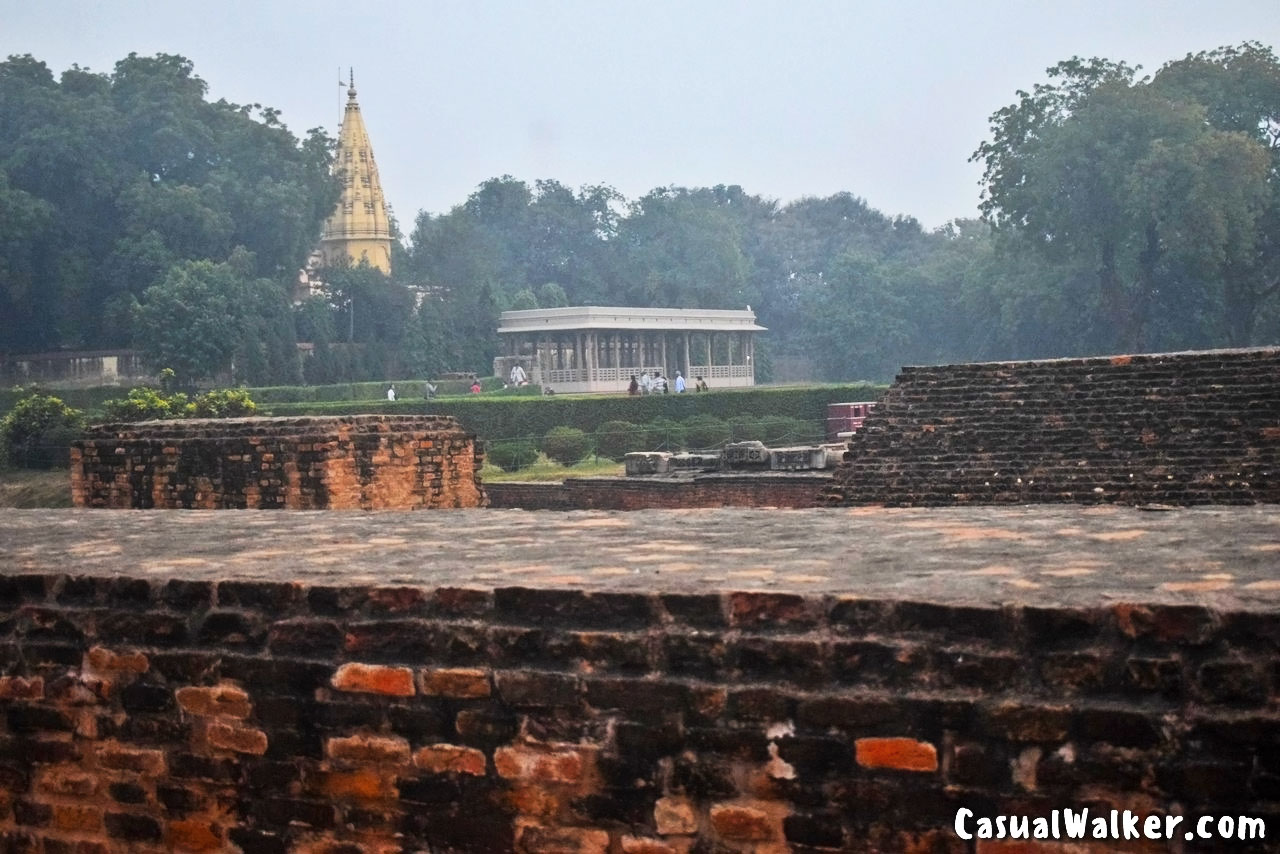
Discovering Monastic Serenity
Within the complex, three distinct sites bear testament to the monastic traditions of Sarnath. Monastery I, believed to trace its origins to the 12th century AD, boasts an open courtyard flanked by rows of cells. Monastery II, dating back to the Gupta era, exudes a sense of tranquility within its modest confines. Meanwhile, Monastery III, a relic from the Kushan era, mirrors the layout of its predecessor, embodying the timeless essence of Buddhist monastic life.
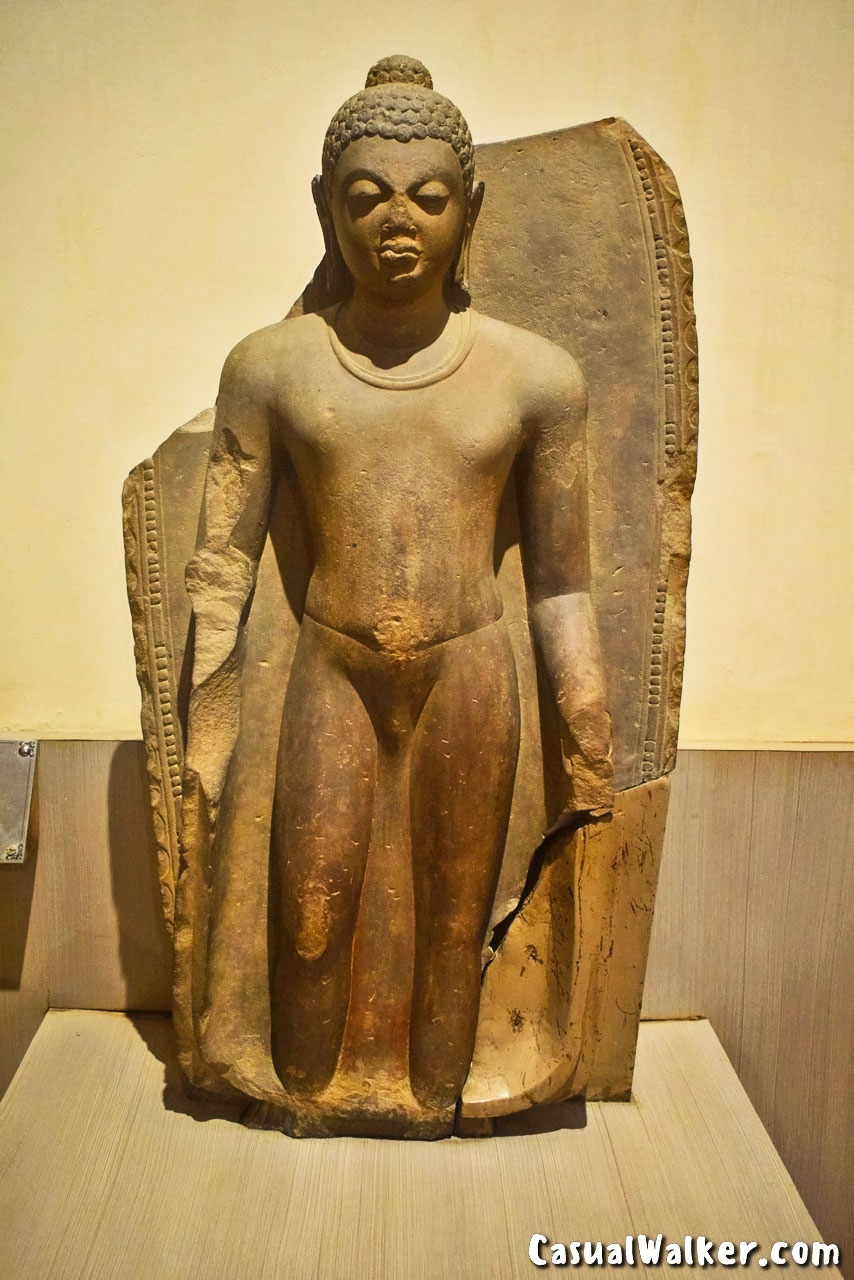
Unveiling the Chaukandi Stupa
The octagonal Chaukandi Stupa, a relic from the Gupta period, stands as a monument of national significance, recognized by the ASI. Its name, derived from its four-armed plan, offers a glimpse into its architectural symbolism. This sacred site commemorates the historic meeting of Buddha with his five disciples, marking a pivotal moment in Buddhist lore.
Embracing Spiritual Diversity
Sarnath’s cultural landscape has witnessed a resurgence with the construction of Buddhist temples in Thai, Burmese, Korean, and Chinese architectural styles. These temples, serving as vibrant embodiments of faith, cast a new light on the ancient town, fostering a spirit of inclusivity and cultural exchange.
A Beacon of Spiritual Legacy
As a living testament to the genesis and evolution of Buddhism, Sarnath continues to beckon scholars, pilgrims, and history enthusiasts from across the globe. Its enduring legacy, steeped in spiritual and archaeological significance, offers visitors a profound journey into the teachings of Lord Buddha and the timeless heritage of Buddhism in India.
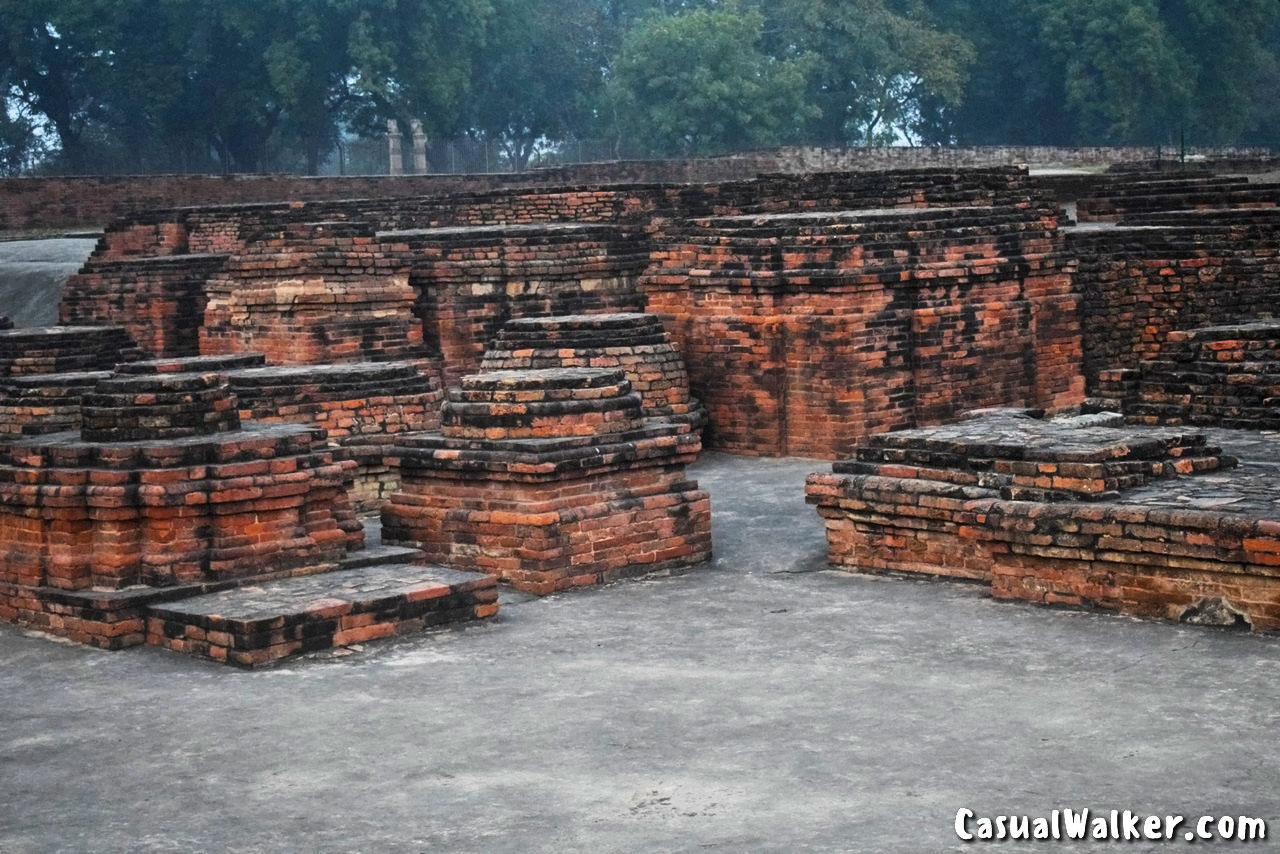
Sarnath Museum
To safeguard these invaluable treasures for posterity, the Archaeological Survey of India meticulously maintains a site Museum nearby. Housing a myriad of sculptures, inscriptions, and artifacts recovered from excavations, this museum stands as a bastion of cultural heritage. Step into the nearby Museum building, a testament to architectural elegance, whose construction commenced in 1904 and reached completion in 1910. With five galleries and two verandahs, this museum offers a captivating journey through time, showcasing antiquities spanning from the 3rd to the 12th centuries A.D.
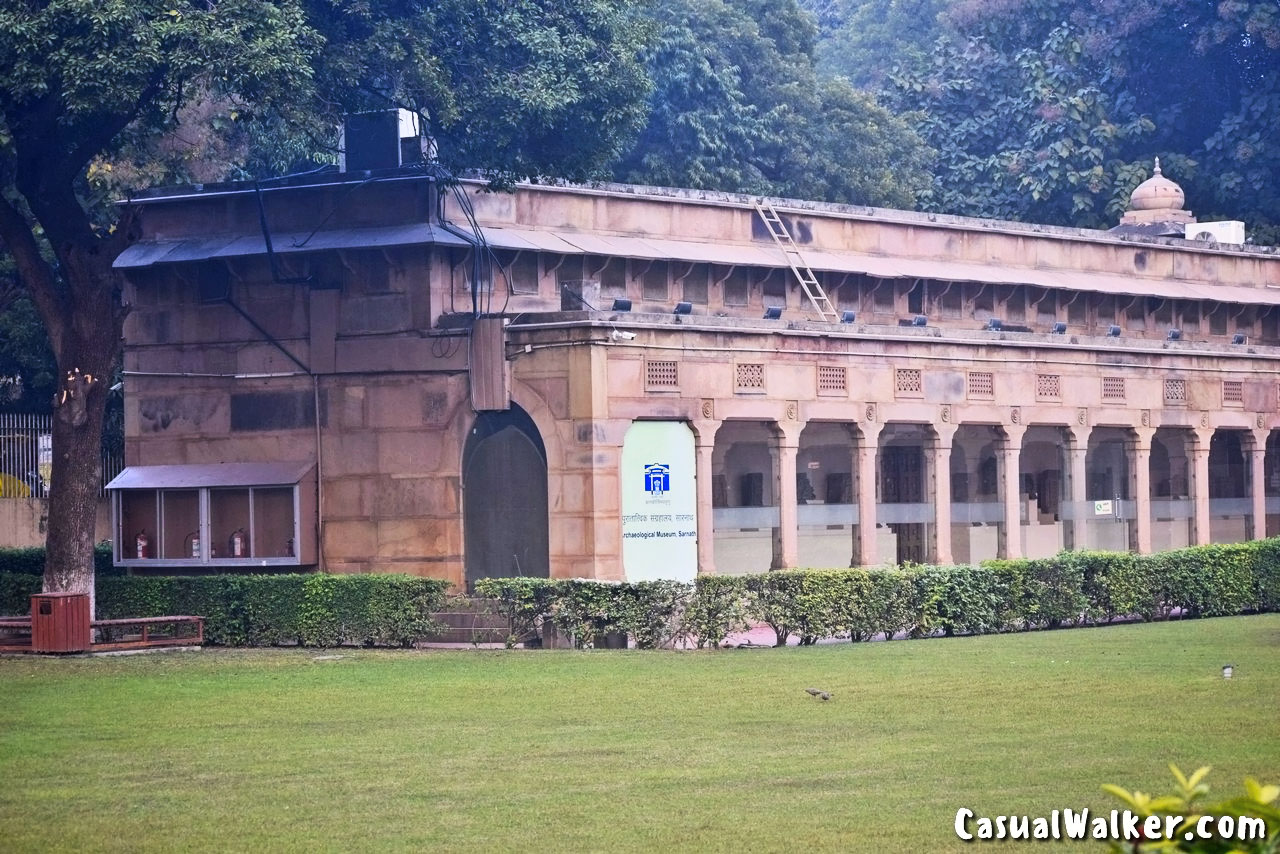
Sarnath Light and Sound Show
Experience the captivating portrayal of Lord Gautam Buddha’s life at the Sarnath Light and Sound Show. This mesmerizing laser show, set against the majestic backdrop of the stupa, offers families a delightful glimpse into the early years of Lord Buddha. We recommend arriving at least 2-3 hours before the show to ensure a seamless experience.
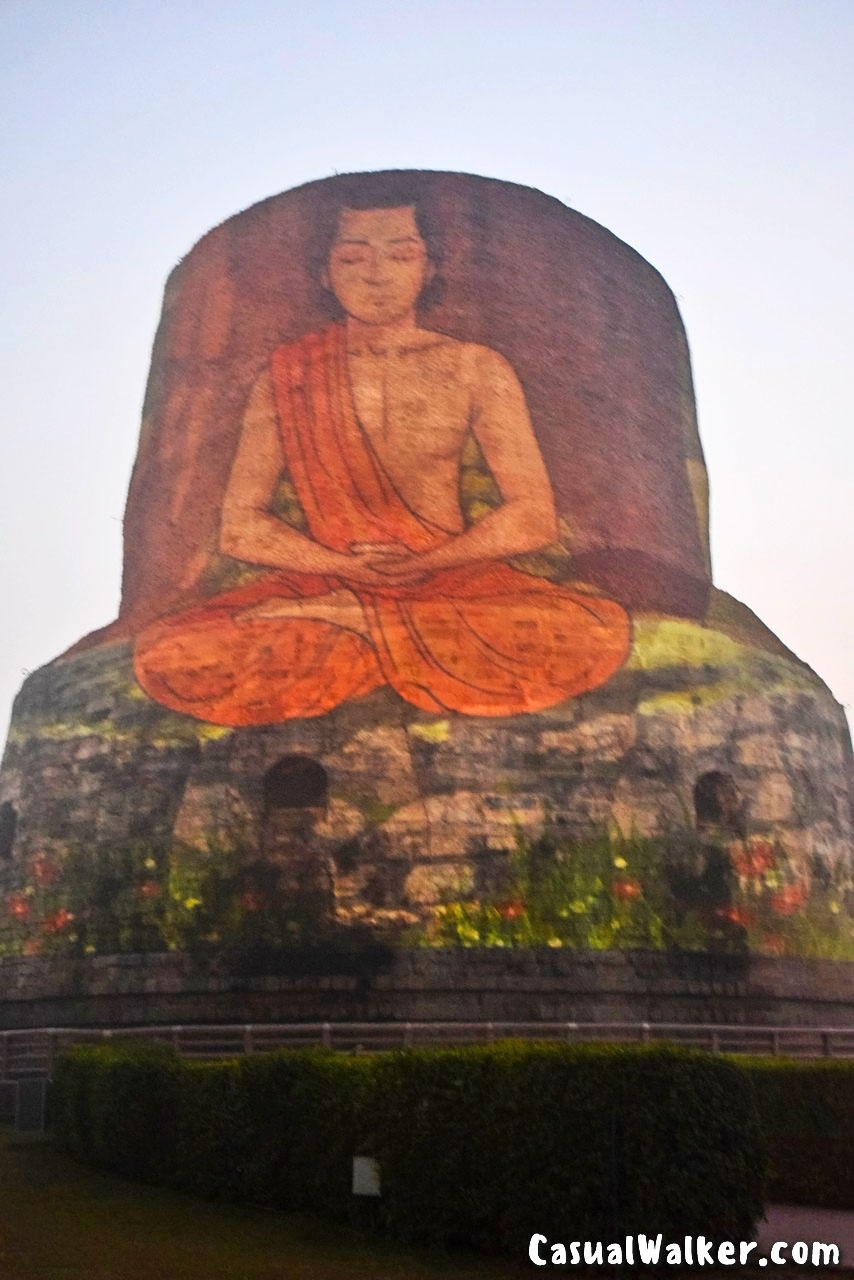
An Enchanting Spectacle
Witness an enthralling spectacle as the lights illuminate the Mauryan-era Dhameka Stupa, bringing to life the story of Lord Buddha from his childhood. Narrated by the legendary Bollywood icon, Amitabh Bachchan, the show seamlessly weaves together the narrative of Buddha’s life with captivating glimpses of the city’s rich culture and artistry.
Tickets for the Sarnath Light and Sound Show can be conveniently purchased at the entry point of the Sarnath archaeological site.
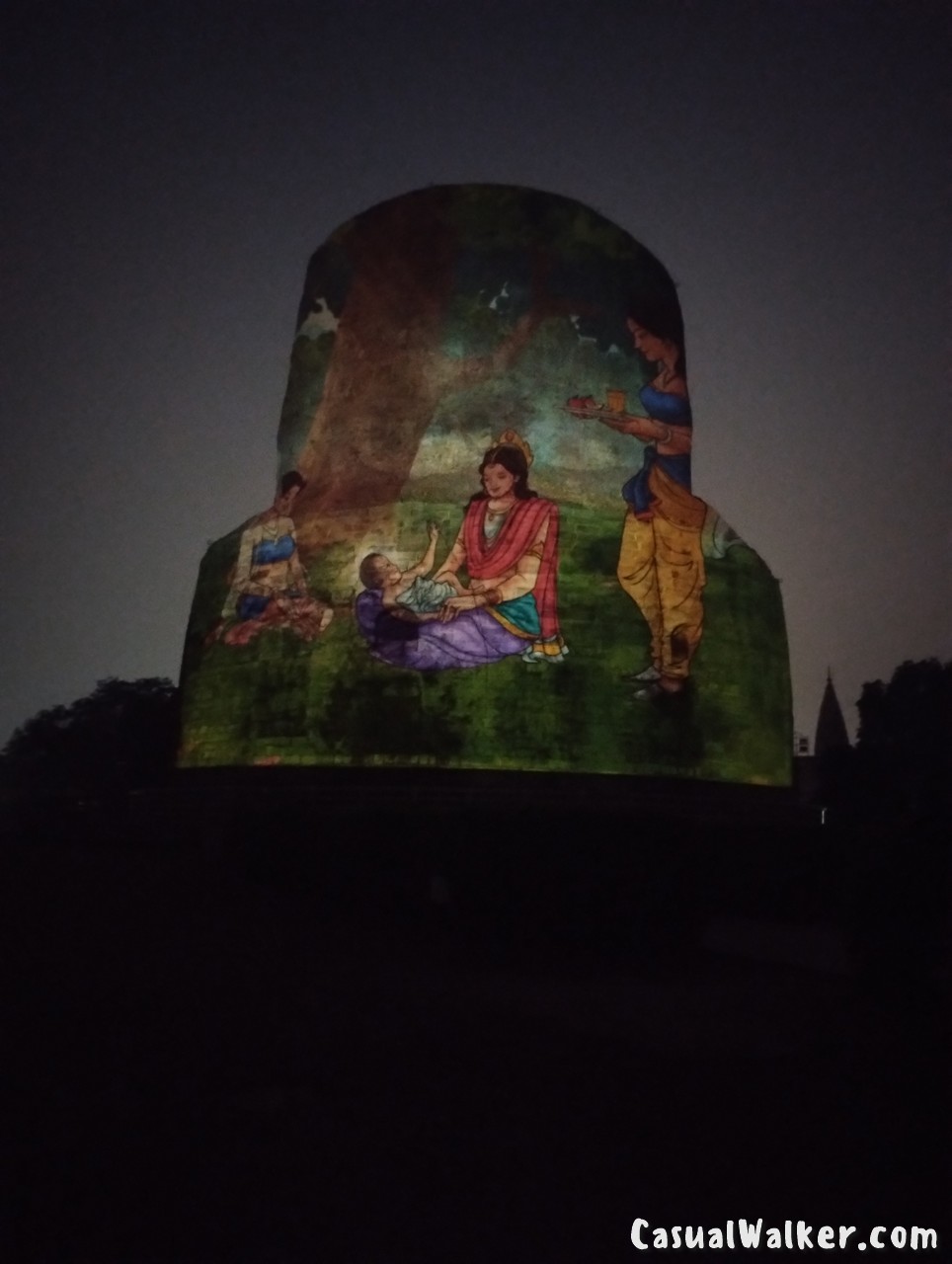
Sarnath Light and Sound Show Timings & Ticket Price
Entry Timing: 5:30-6:00 PM
Show Timing: 6:30-7:00 PM
Ticket Price: INR 200-250
Prepare to be enchanted as you embark on a journey through time with the Sarnath Light and Sound Show.


Travel Tips for in Sarnath, Varanasi
The Archaeological Survey of India diligently oversees the management of Sarnath, ensuring visitors can explore its treasures from the break of dawn until dusk. Information boards strategically placed at excavated sites offer valuable insights into the rich history enshrined within these hallowed grounds.
Sarnath, Varanasi Address:
Sarnath, Varanasi, Uttar Pradesh 221007, India
Sarnath, Varanasi Contact Number: +91 522 2303993 / +91 542 2595007, 2595207
Sarnath, Varanasi Official Website: http://www.sarnathmuseumasi.org
Sarnath, Varanasi Timings:
Open on all days
Museum Opening & Closing time are 9.00 AM to 5.00 PM
Closed on Friday
Excavation Sarnath Site Opening time Sun rise to Sun set.
Entrance Fee INR 5 Per head
Free Entry for children below the age of 15 years
Free Entry fees for children up to 15 years
Sarnath Light and Sound Show Timings & Ticket Price
Entry Timing: 5:30-6:00 PM
Show Timing: 6:30-7:00 PM
Ticket Price: INR 200-250
Prepare to be enchanted as you embark on a journey through time with the Sarnath Light and Sound Show.
How To Reach Sarnath, Varanasi:
By Road: Varanasi boasts well-connected roadways, providing travelers with various transport options. Whether you opt for a taxi, auto-rickshaw, or public bus, the journey from Varanasi city center to Sarnath is a mere 30-minute drive, promising convenience and accessibility.
By Train: Varanasi Junction, a bustling railway hub, links the region to major cities nationwide. Upon arrival, travelers can seamlessly transition to Sarnath via taxi or auto-rickshaw, with the station located approximately 12 kilometers from this sacred destination.
By Air: Touching down at Lal Bahadur Shastri International Airport, also known as Varanasi Airport (VNS), marks the beginning of your Sarnath adventure. With both domestic and international flights serviced, travelers can easily secure transport via taxi or hired car to reach the serene environs of Sarnath.

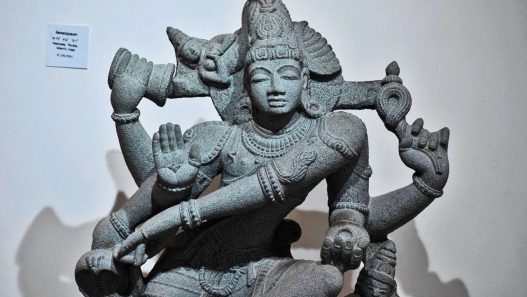


















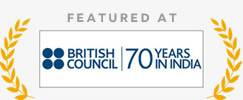
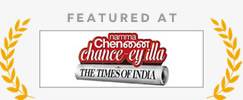
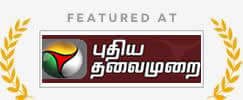
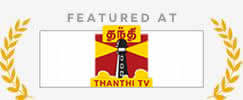




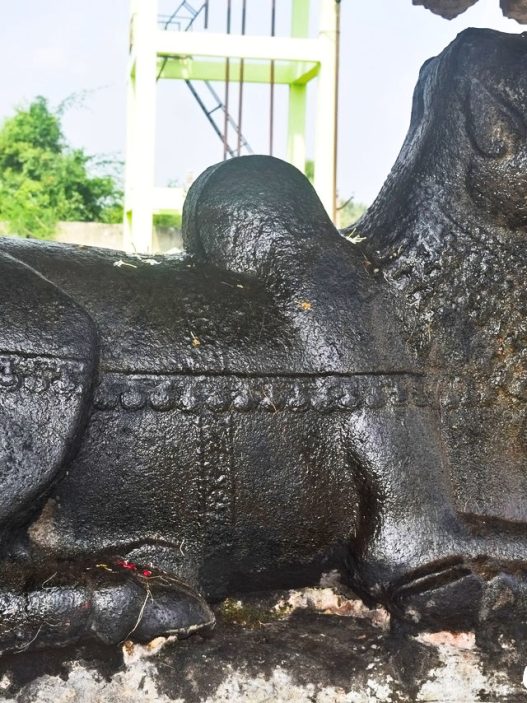
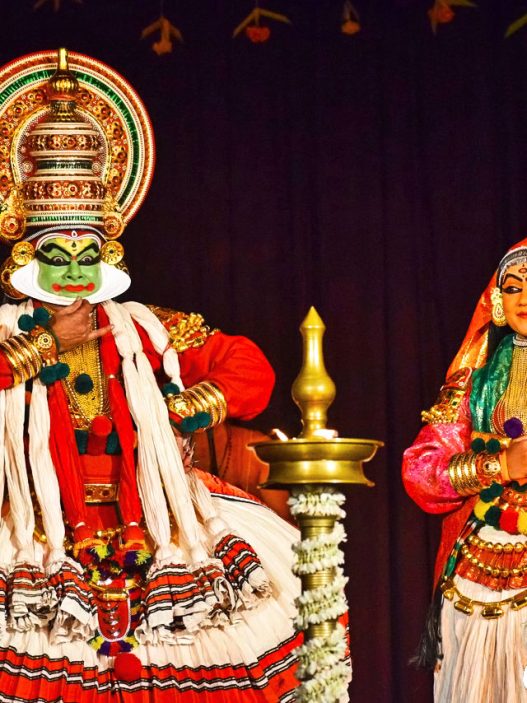





ctk0hz
Thankyou for this post, I am a big fan of this site would like to go on updated.
After study a few of the blog posts on your web site now, and I really like your method of blogging. I bookmarked it to my bookmark web site listing and can be checking back soon. Pls check out my web page as properly and let me know what you think.
I conceive this site has got some very wonderful info for everyone :D. “As ill-luck would have it.” by Miguel de Cervantes.
Hi there! Do you use Twitter? I’d like to follow you if that would be okay. I’m absolutely enjoying your blog and look forward to new updates.
Hi my friend! I wish to say that this article is amazing, great written and come with approximately all important infos. I¦d like to look more posts like this .
Greetings! Very helpful advice on this article! It is the little changes that make the biggest changes. Thanks a lot for sharing!
I love your writing style truly enjoying this web site.
Keep working ,great job!
What’s Happening i’m new to this, I stumbled upon this I have found It absolutely useful and it has aided me out loads. I hope to contribute & help other users like its helped me. Great job.
888slot apk Hiện nay, nền tảng cung cấp đa dạng hình thức giải trí khác nhau để phù hợp với mọi nhu cầu của anh em. Ngoài việc được tham gia vào các danh mục truyền thống như Casino, Thể Thao, Nổ Hũ thì bạn còn được khám phá nhiều loại hình đặc sắc mới như Đá Gà, Bắn Cá.
https://t.me/s/officials_pokerdom/3698
Nếu bạn yêu thích các trò chơi bắn cá, ứng dụng slot365 casino sẽ không làm bạn thất vọng. Các game bắn cá tại đây được thiết kế với đồ họa đẹp mắt, hiệu ứng sống động và luật chơi đơn giản.
We stumbled over here different page and thought I might check things out. I like what I see so now i’m following you. Look forward to checking out your web page for a second time.
Solid analysis
FCFachai is a new one to me! Had a little play, and it’s got some interesting games. Worth a look if you’re bored with the usual suspects. See what they’ve got at fcfachai
I’m really enjoying the design and layout of your blog. It’s a very easy on the eyes which makes it much more enjoyable for me to come here and visit more often. Did you hire out a developer to create your theme? Superb work!
https://t.me/s/Martin_officials
You have brought up a very excellent details, appreciate it for the post.
Die Welt der Online Casinos ist vielfältig und bietet für jeden Spielertyp das
passende Angebot. In unserer Liste der besten Online Casinos für 2025 finden sich
die Top 50 staatlich lizenzierten Online Spielbanken für deutsche Spieler.
Ein besonderes Augenmerk liegt dabei auf der Lizenzierung durch
die Gemeinsame Glücksspielbehörde der Länder (GGL), die die Sicherheit
der Spieler gewährleistet. Die besten Online Casinos bieten lukrative
Boni, vielseitige Spiele und hohe Standards im
Daten- und Spielerschutz. Deshalb bieten wir eine Vielzahl von zuverlässigen und schnellen Zahlungsmethoden an.
Wenn du dich für eine Anmeldung im Online Casino entscheidest, hast
du ebenfalls die Möglichkeit, kostenlos im Spaßmodus
zu spielen. 100% kostenlos ohne Download und ohne Anmeldung direkt im Browser jetzt das TOP Casino Spiel
Faust hier spielen. Möchtest du zum Vergnügen spielen, oder lieber hohe Preise gewinnen?
Casino Hold’em bietet die Möglichkeit,
direkt gegen das Casino zu spielen, mit dem Ziel, eine bessere Hand als der
Dealer zu haben. Egal, ob Sie auf der Suche nach dem best online casino
sind oder einfach nur Spaß am spiel casino haben möchten, es gibt für jeden etwas.
Darüber hinaus ermöglichen casino online echtgeld Plattformen den Spielern, den wahren Nervenkitzel von Wetten und möglichen Gewinnen zu
erleben. Zudem bietet das casino online eine bequeme Möglichkeit,
von zu Hause aus in die Welt des Glücksspiels einzutauchen.
References:
https://online-spielhallen.de/starda-casino-mobile-app-ihr-umfassender-begleiter-fur-unterhaltung-unterwegs/
Mit einer Lizenz aus Curacao bieten wir Ihnen eine sichere und vertrauenswürdige Umgebung für Online-Glücksspiele.
Nutzer von Android-Geräten können die Leon-App installieren und dafür 50 Freispiele erhalten. Leon Casino Deutschland bietet
einen kostenlosen Demo-Modus, mit dem Spieler alle Spielautomaten und Tischspiele gratis ausprobieren können. Wechsle anschließend in den Echtgeld-Modus, in dem du bereits mit Einsätzen ab bereits 0,
10 € spielen kannst.
Das Beste am Leon VIP ist, dass du Angebote bekommst, die auf dein Spielverhalten zugeschnitten sind.
Es gibt echtes Cashback, Bargeldboni, Gratiswetten und persönlichen Support nur für dich.
Je mehr du spielst, desto mehr Punkte sammelst du – sogenannte LPs
(Leon Points). Zum Beispiel mehr Boni, exklusive Aktionen und wöchentliche Geschenke bis zu 300 €.
Du bekommst sie bei Casino-Spielen und Sportwetten. Wenn du oft spielst,
sammelst du automatisch Punkte.
Die Einsatzlimits decken sowohl Gelegenheitsspieler als auch High Roller ab.
Keine generischen Versprechen – hier sind die Vorteile konkret, personalisiert und für Vielspieler gedacht, die Wert auf Anerkennung
legen. Für alle, die gern spielen und sich messen wollen, ist
das perfekt. Später tauschst du sie gegen Freispiele,
Gratiswetten oder Bonusgeld. Die Gewinne aus den Freispielen musst du 20- bis 25-mal umsetzen.
References:
https://online-spielhallen.de/sol-casino-cashback-ihr-weg-zu-hoheren-gewinnen-und-spielspas/
The checker is the playing piece, and you will
move around the game. The winner of Backgammon is the
first person to remove all their checkers from the board.
Checkers can be taken off when a checker reaches their home board (the
upper or lower left-hand corner) without having any of the
opponent’s checkers in the way. In a two-player game,
one player moves clockwise, and the other anti-clockwise.
If you’re a fan of backgammon, you may like Ludo King (aka Parchisi), the dice game
of kings; or how about a good old game of Uno Online, the card
game where you aim to be the first one with no cards.
In this version, each round is its own game, with no point scoring involved.
You can change thedirection of play in Options
if you prefer going from bottom right to top right.
One moment, we’re setting up your game… Has challenged you to a game!
You have challenged to a game. Your connection to the game
server is having some problem, but we are trying to reconnect you
to the game.
Many of those who are just getting started in Backgammon learn how to
improve their gameplay through playing, as opposed to reading instructions.
Stacking your checkers in piles of at least two, means that your
opponent is unable to land on this space and knock your checkers off the board.
As mentioned above, the main objective when playing Backgammon is to return your
checkers to the home point and bear off. If you are the first player to
bear off the board, you win the game. You must work to move your chosen checkers around the board, using the score on the dice to determine how far you can travel.
References:
https://blackcoin.co/best-paying-online-casinos-australia-high-rtp-pokies-2025-update/
Besides a user-friendly interface that facilitates
navigation and access to the desired content, we also appreciate
operators optimising their casino platform for mobile play.
Filters that let players narrow down search results are always a big plus.
Therefore, we test the interface to check if the games are sorted into proper categories.
If they are not well-organised, it can be difficult for players to find what they are looking for.
We check player feedback on various sites and use it to complete our impressions.
Online casinos are inarguably better than land-based ones
in terms of payout percentage, especially when it comes to pokie machines.
Every online casino Australia real money players prefer that made it on our list
is fully optimised for mobile play — whether through a dedicated
app or responsive browser gameplay. With over 8,000 games to choose from (from 60 different game providers),
it’s easily one of the biggest collections of games we’ve seen from a real money online
casino. The best Australian online casino real money site welcomes new players with a versatile bonus that is perfect
for all bankrolls. Yes, some online casinos in Australia for real
money process and deliver withdrawals in 24 – 48 hours.
If possible, be sure to take advantage of cashback
offers and other bonuses at Australian online casinos.
You can play directly through your mobile browser on Android or iOS, with
access to the same games, bonuses, and account features as desktop users.
New players can claim free spins no deposit using bonus codes, and from time to time there are free chip no deposit
bonus codes available. Needless to say, if you, for some reason, don’t want to play RTG games or want a casino with live dealer
options, then Mega Medusa is not for you, and I list a few alternatives below.
The site runs smoothly on Android, iOS, and other operating systems, with full access to games,
bonuses, and account features through your mobile browser.
Fast Bitcoin payouts are frequently mentioned, especially by regular users who prefer standard deposit bonuses to high-risk free chip offers.
Reviews on platforms like Trustpilot and gambling forums often focus on bonus terms, particularly wagering requirements and maximum
cashout limits, which can catch some players off guard if they don’t read
the fine print.
Start your journey at Spinight Casino with a generous welcome offer featuring
a 250% bonus up to $3,750 AUD and 250 free spins for new players.
Spinoloco allows players to set deposit limits, take time-outs,
or self-exclude directly from their accounts. Spinoloco
offers a welcome package of up to $5,000 in bonus funds and 250
free spins, spread across your first four deposits.
Start your Spinoloco adventure with a rewarding Welcome package,
featuring up to $5,000 in bonuses and 250 free spins.
Here you’ll find everything you need from the biggest welcome bonuses to crypto sign-up offers
and free registration bonuses.
Selecting a secure online casino in Australia is the key to a positive real-money experience.
24/7 support with real people ready to help is essential.
Look for casinos that partner with well-known brands in the gaming industry and offer regularly tested RNG mechanics.
Mega Medusa Casino AU focuses on fast payouts so players don’t wait longer than necessary for their wins.
A secure platform must use encrypted systems to protect your payment data and ensure that both deposits
and withdrawals are processed smoothly. Always check that a casino
clearly displays its licensing information and meets international security standards.
References:
https://blackcoin.co/treasure-island-ti-las-vegas-hotel-casino/
Whether you’re topping up your account on desktop or mobile,
the process is smooth and efficient, allowing you to focus on what matters most
— enjoying your gaming experience. Each pokie is crafted to deliver smooth gameplay
and captivating sound design, ensuring an immersive experience every time you spin. The casino’s bonuses and promotions are designed to make your
experience as exciting and valuable as possible.
The welcome bonus package worth $7,500 plus 150 free spins provides exceptional value for new
players. Lucky Green casino stands out as a premier destination for Australian online pokies enthusiasts in 2025.
The live chat function lets you interact with dealers and other players in real-time.
The casino stores player funds in segregated accounts separate from
operational capital.
The platform’s game aggregation system delivers smooth
performance across all devices without requiring software
downloads. This diverse approach ensures regular content updates while providing players access to unique titles unavailable at many competing casinos.
Aviator leads this category as the most popular crash game, challenging
players to cash out before the plane crashes. Bar Roulette 2000X presents
Lucky Green’s most unique live offering, combining traditional roulette gameplay with enhanced multiplier potential.
Evolution Gaming and Pragmatic Play Live power the majority of live games, including
multiple blackjack variants, European and American roulette, baccarat, and poker games.
The pokies selection dominates the library with over 1,800 titles spanning classic three-reel
slots, modern video slots, and progressive jackpot games.
References:
https://blackcoin.co/sweeps-oasis-casino/